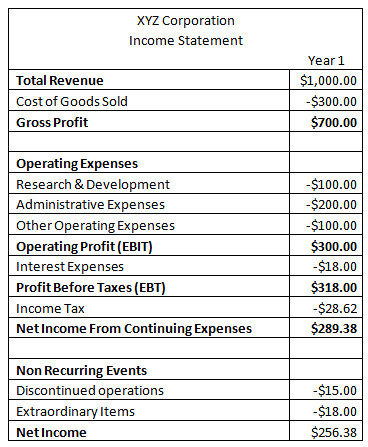Type of Change
|
What to Do
|
Accounting Estimate
|
Prospective (affects the future)
|
Accounting Principle
|
Retrospective (affects the past)
|
Accounting Entity (GAAP only, not IFRS)
|
Retrospective (Restate)
|
Easy enough? Let’s pretend….
Your Story #1 – Change in Accounting Principle
Since 2001, you have been using a GAAP accounting method that calculates expense of $10,000 per year. However, in 2005, you decide to change to a different GAAP accounting method that calculates the same expense as $30,000 per year. In the current year, you are showing the income statements from 2004 and 2005. With this change, what amount do you report in the earliest retained earnings figure being shown?
Changes in accounting principles are handled retrospectively, meaning the expense for each year should be changed to $30,000. Since 2001, 2002, and 2003 are not reported, the accumulated change from these 3 years will need to be reported as a change in the earliest retained earnings.
($30,000 - $10,000)*3 = $60,000.
$60,000 will be the amount that you will report in the beginning retained earnings for 2004.
Your Story #2 – Change in Depreciation Method (Estimate)
You bought a store for $100,000 in Year 2001. You expected it to last for 10 years, and you believed that there is a salvage value of $20,000. During Year 2004, you realize that the total life of the store is actually 6 years, and there is no salvage value. Assume that you use straight-line. What is the net book value of your store on the December 31, 2004 balance sheet?
A change in depreciation method is a change in accounting principle that is inseparable from a change in estimate; thus, this must be handled prospectively.
1) Calculate the accumulated depreciation before the change took place.
([$100,000 - $20,000]/10 years)*3 years = $24,000
2) Use the new estimate method to calculate the deprecation going forward:
6 years (new estimate) – 3 years passed = 3 years remaining
$100,000 - $24,000 = $76,000 (book value at the beginning of 2004)
$76,000/3 = $25,333 (depreciation expense for 2004)
$76,000 - $24,000 (accumulated depreciation) = $52,000 (net book value)
The net book value at the end of 2004 is $52,000.
Other Notes:
- 2 ways to present changes in accounting principle
- 1 year financial statement presentation: adjust beginning Retained Earnings number with the cumulative change
- 2 years financial statement presentation: adjust the prior year opening balance for retained earnings. Use new method number for current year.









